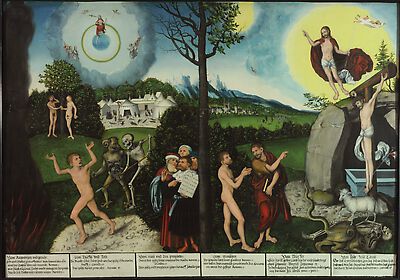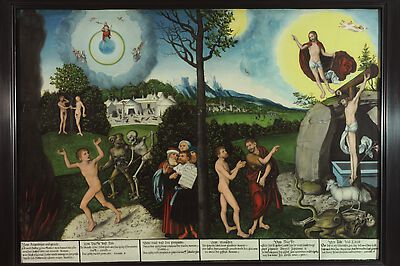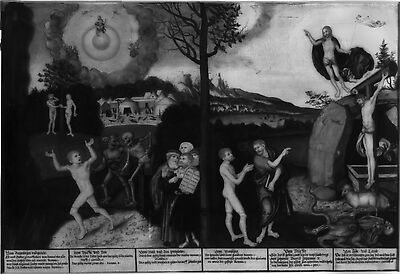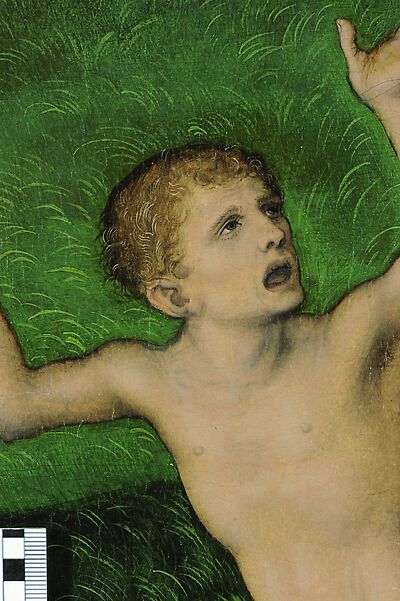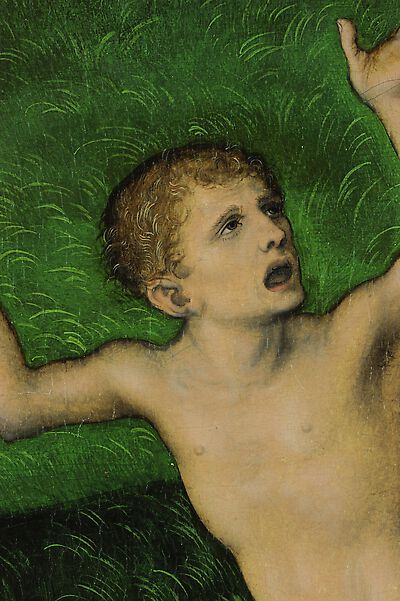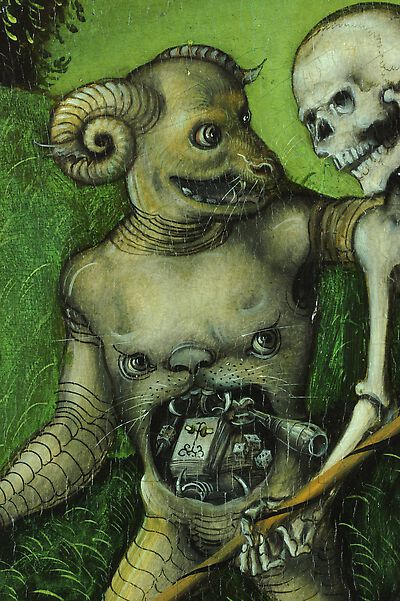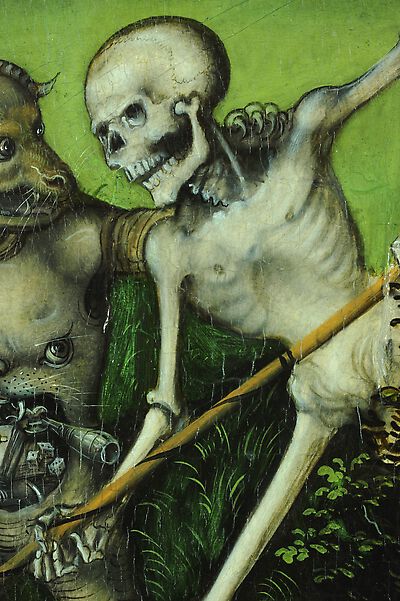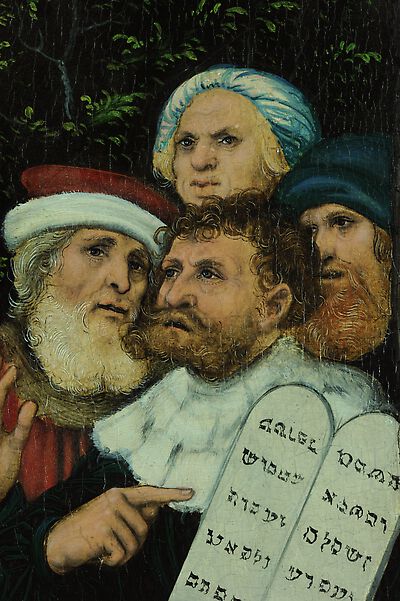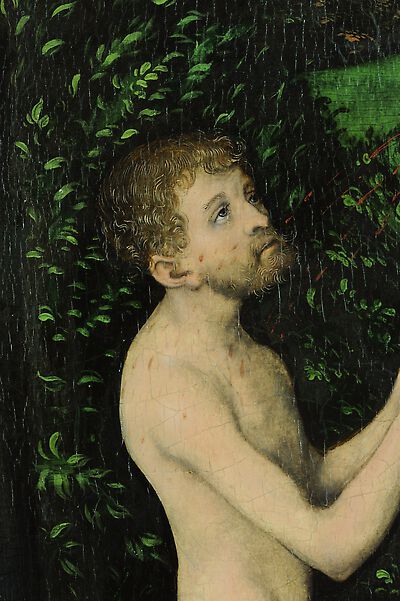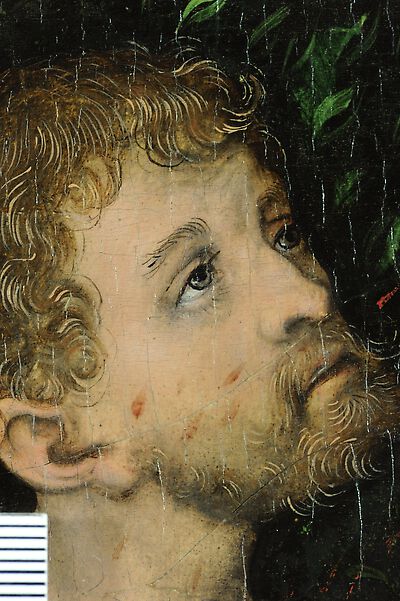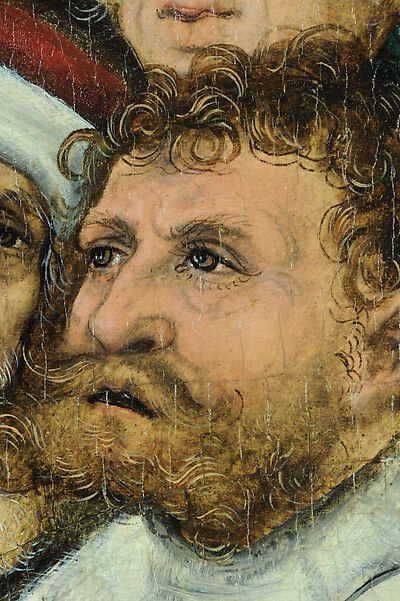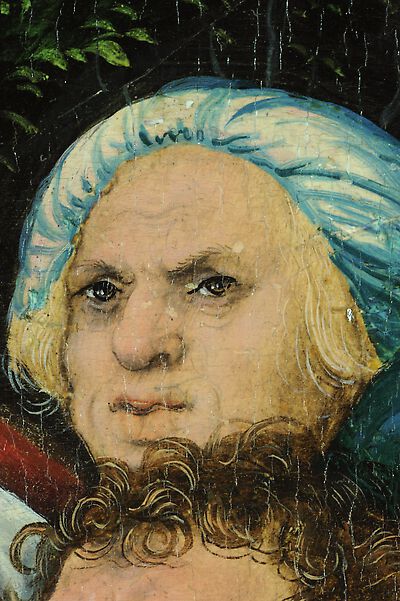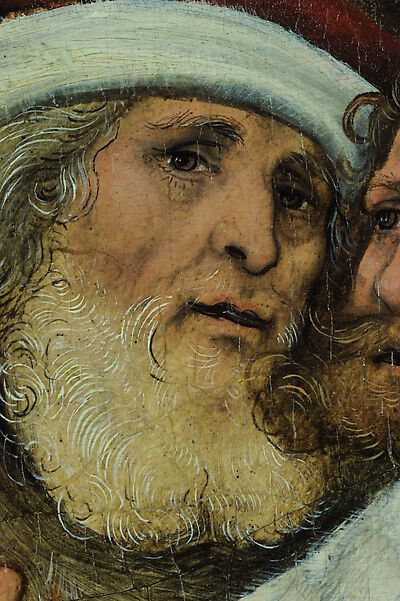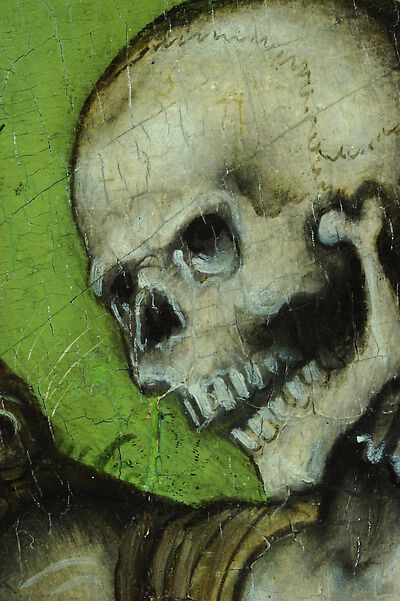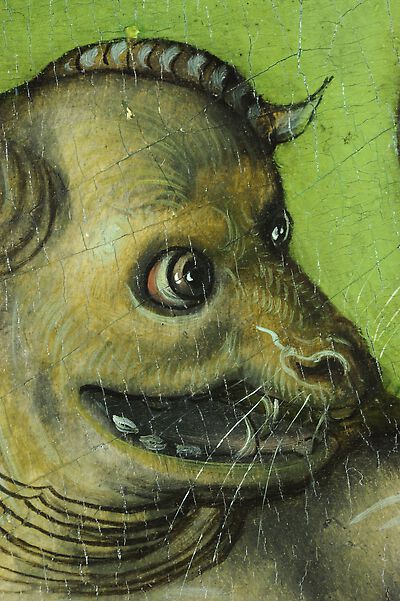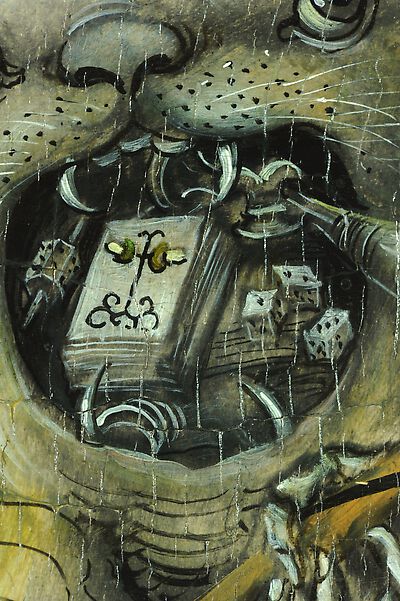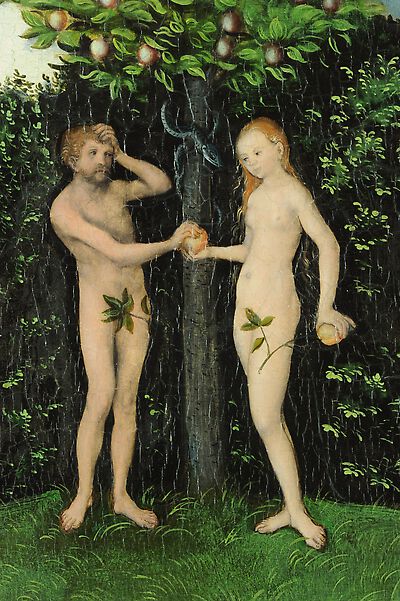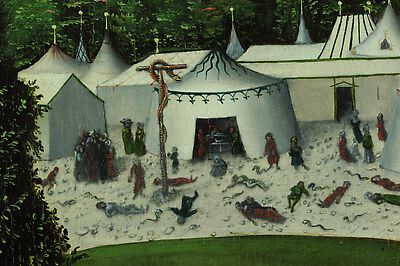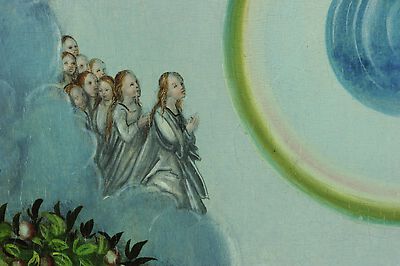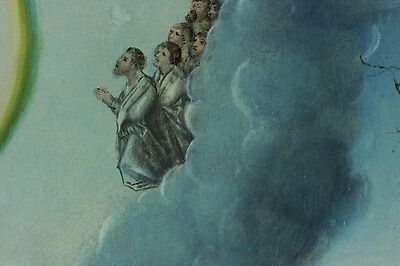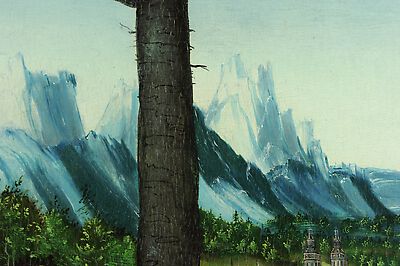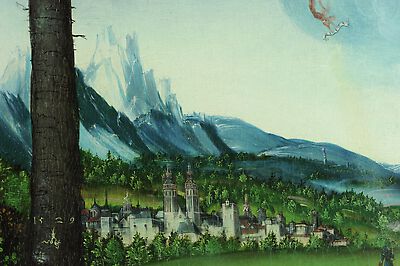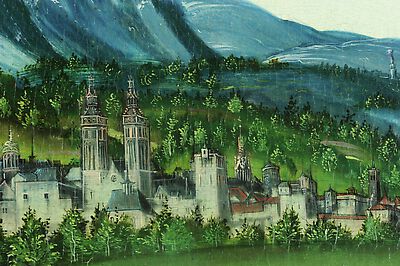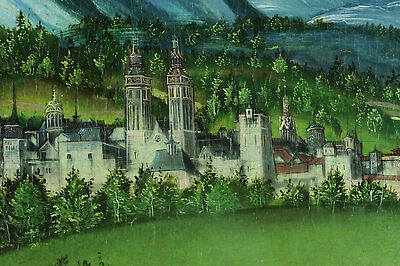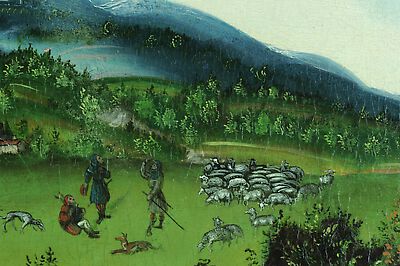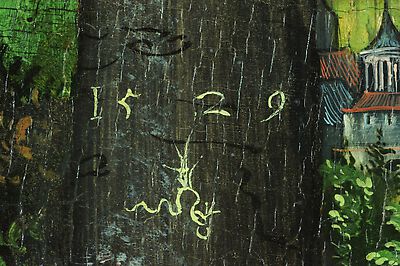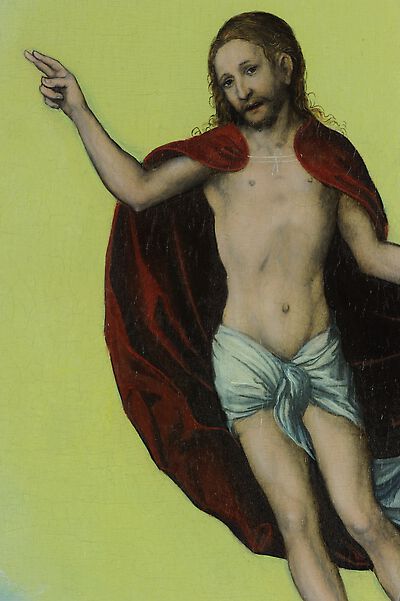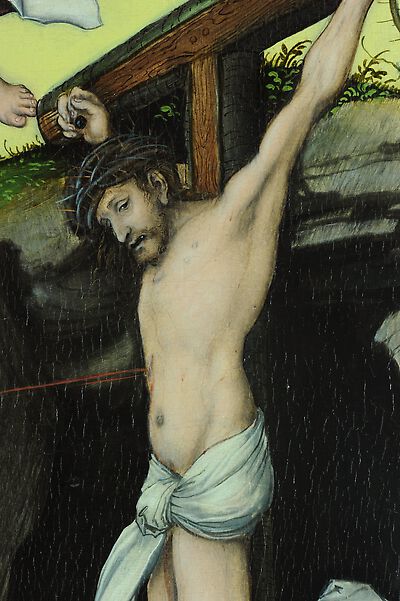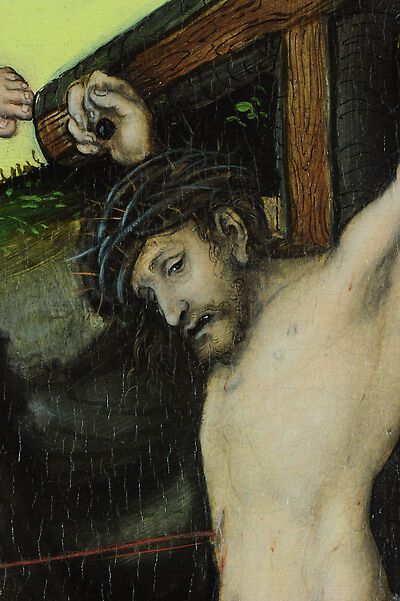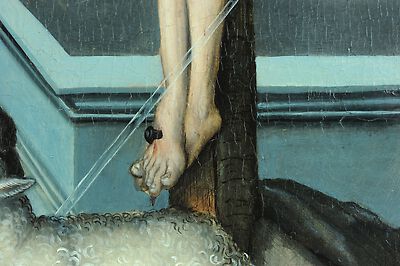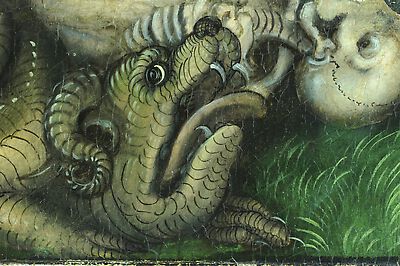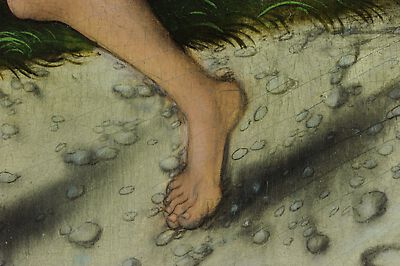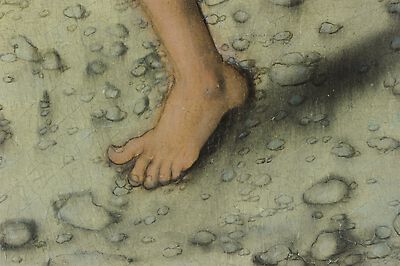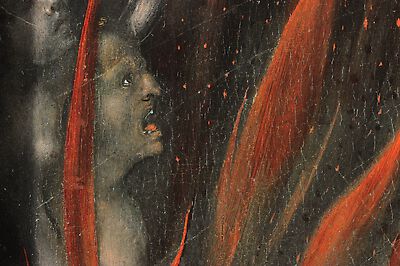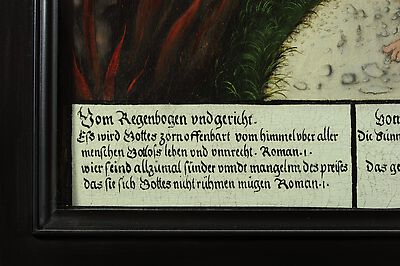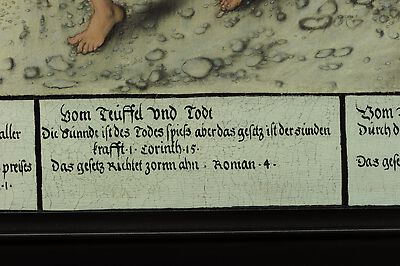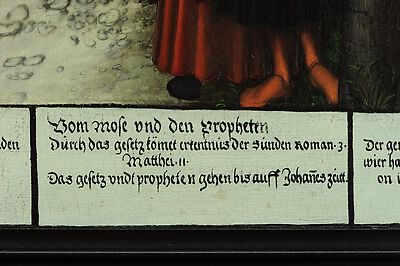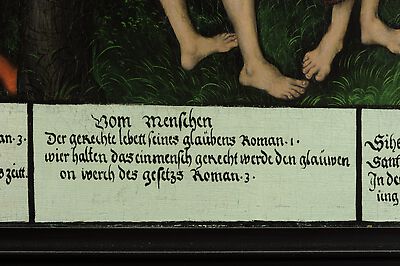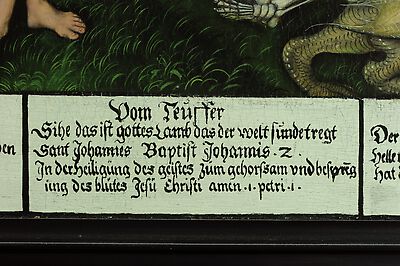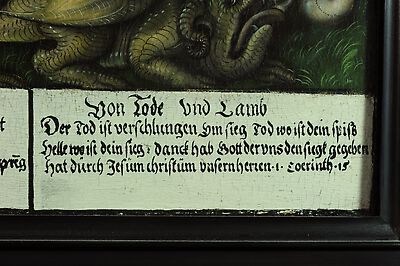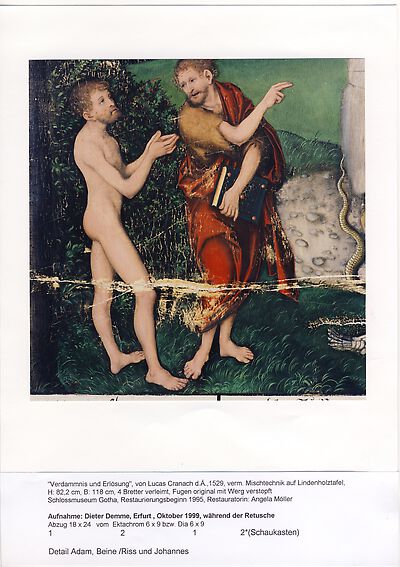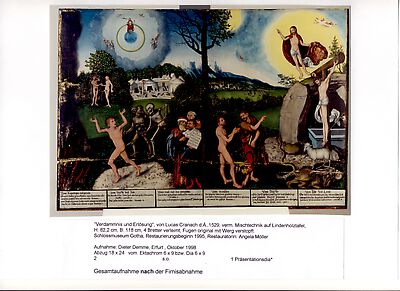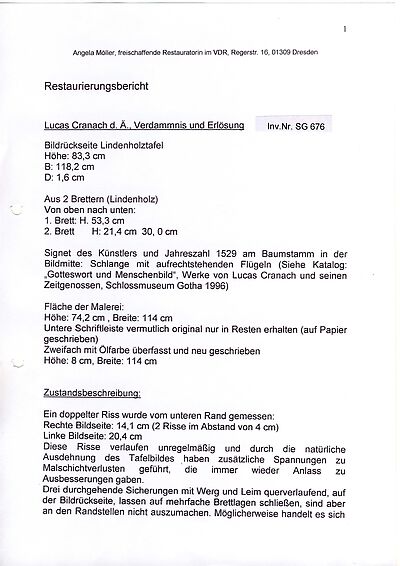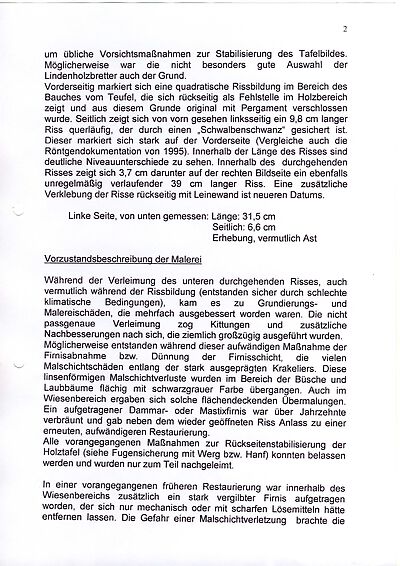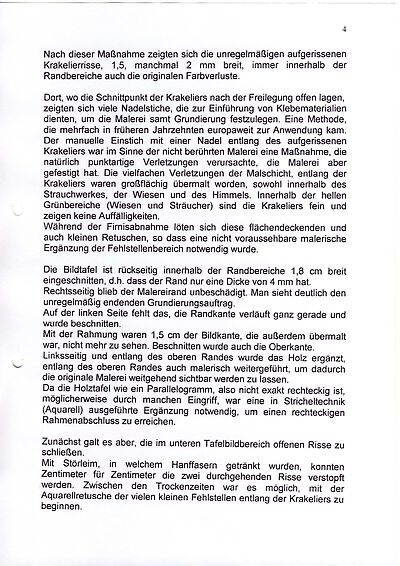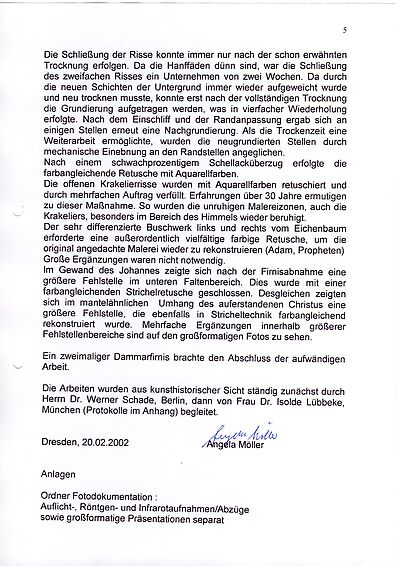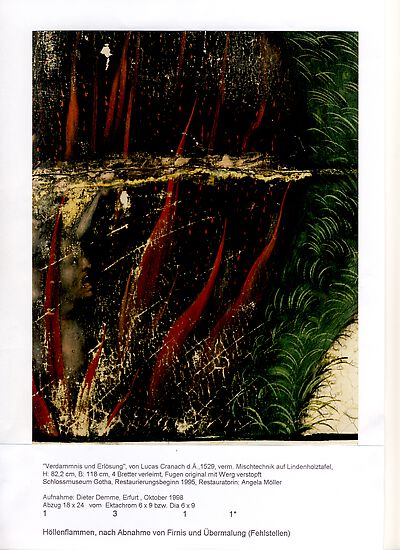| Exhib. Cat. Lübeck 2021 |
246, 247 |
045 |
Fig. p. 247 |
| Editor | Dagmar Täube |
|---|
| Title | Lucas Cranach der Ältere und Hans Kemmer.
Meistermaler zwischen Renaissance und Reformation [Lübeck, St. Annen-Museum] |
|---|
| Place of Publication | Munich |
|---|
| Year of Publication | 2021 |
|---|
|
| Fleck 2021 |
93, 96, 99 |
|
|
| Author | Miriam Verena Fleck |
|---|
| Title | "Wier seind allzumal sünder". Glaubensallegorien im Kontext von Buße und Erlösung |
|---|
| Publication | in Dagmar Täube, ed., Lucas Cranach der Ältere und Hans Kemmer.
Meistermaler zwischen Renaissance und Reformation [Lübeck, St. Annen-Museum] |
|---|
| Place of Publication | Munich |
|---|
| Year of Publication | 2021 |
|---|
| Pages | 93-101 |
|---|
|
| Görres 2017 B |
45, 46 |
|
Fig. 2 |
|
|
| Price 2017 |
19-21, 26 |
|
Fig. 6 |
| Author | David H. Price |
|---|
| Title | Lucas Cranach e la Riforma |
|---|
| Publication | in Francesca de Luca, Giovanni Maria Fara, eds., I volti della Riforma. Lutero e Cranach nelle collezioni medicee , Exhib. Cat. Florence, 2017 |
|---|
| Place of Publication | Florence, Milan |
|---|
| Year of Publication | 2017 |
|---|
| Pages | 12-27 |
|---|
|
| Exhib. Cat. Prague 2016 |
60, 65, 163, 167 |
|
|
| Editor | Olga Kotková |
|---|
| Title | Cranach. Ze všech stran. From all sides. |
|---|
| Place of Publication | Prague |
|---|
| Year of Publication | 2016 |
|---|
| Pages | 16-180 |
|---|
|
| Bonnet, Görres 2015 |
58-59 |
18 |
p. 59 |
| Author | Anne-Marie Bonnet, Daniel Görres |
|---|
| Title | Lucas Cranach d. Ä. - Maler der Deutschen Renaissance |
|---|
| Place of Publication | Munich |
|---|
| Year of Publication | 2015 |
|---|
|
| Exhib. Cat. Gotha, Kassel 2015 |
170, 171, 343 |
42 |
Pl. p. 171, Fig. p. 343 (T42) |
| Editor | Julia Carrasco, Justus Lange, Benjamin D. Spira, Timo Trümper, Stiftung Schloss Friedenstein, Gotha |
|---|
| Title | Bild und Botschaft. Cranach im Dienst von Hof und Reformation, [Gotha, Herzogliches Museum; Kassel, Gemäldegalerie Alte Meister, Schloss Wilhelmshöhe] |
|---|
| Place of Publication | Heidelberg |
|---|
| Year of Publication | 2015 |
|---|
|
| Exhib. Cat. Weimar 2015 |
49 |
|
|
| Editor | Wolfgang Holler, Karin Kolb |
|---|
| Title | Cranach in Weimar, [Weimar, Schiller-Museum, 3 April - 14 June 2015] |
|---|
| Place of Publication | Dresden |
|---|
| Year of Publication | 2015 |
|---|
|
| Görres 2015 B |
41 |
|
pl. 22 |
| Author | Daniel Görres |
|---|
| Title | Cranach, Luther und die Ernestiner. Der Epitaphaltar der Stadtkirche St. Peter und Paul in Weimar |
|---|
| Publication | in, Franziska Bomski, Hellmut Th. Seemann, Thorsten Valk, eds., Bild und Bekenntnis. Die Cranach-Werkstatt in Weimar |
|---|
| Place of Publication | Göttingen |
|---|
| Year of Publication | 2015 |
|---|
| Pages | 37-53 |
|---|
|
| Poulsen 2015 A |
68 |
|
|
| Author | Hanne Kolind Poulsen |
|---|
| Title | Cranachs Bildsprache und der neue lutherische Glaube |
|---|
| Publication | in Julia Carrasco, Justus Lange, Benjamin D. Spira, Timo Trümper, Stiftung Schloss Friedenstein Gotha and Museumslandschaft Hessen Kassel, eds., Bild und Botschaft. Cranach im Dienst von Hof und Reformation, [Exhib. Cat. Gotha, Kassel] |
|---|
| Place of Publication | Heidelberg |
|---|
| Year of Publication | 2015 |
|---|
| Pages | 63-71 |
|---|
|
| Spira 2015 |
57 |
|
|
| Author | Benjamin D. Spira |
|---|
| Title | Lucas Cranach, der Maler Luthers. Der Hofmaler und der Reformator - Bindung, Bilder und Bedeutung |
|---|
| Publication | in Julia Carrasco, Justus Lange, Benjamin D. Spira, Timo Trümper, Stiftung Schloss Friedenstein Gotha and Museumslandschaft Hessen Kassel, eds., Bild und Botschaft. Cranach im Dienst von Hof und Reformation, [Exhib. Cat. Gotha, Kassel] |
|---|
| Place of Publication | Heidelberg |
|---|
| Year of Publication | 2015 |
|---|
| Pages | 51-62 |
|---|
|
| Bonnet, Kopp-Schmidt, Görres 2010 |
170-171 |
18 |
|
| Author | Anne-Marie Bonnet, Gabriele Kopp-Schmidt, Daniel Görres |
|---|
| Title | Die Malerei der deutschen Renaissance |
|---|
| Place of Publication | Munich |
|---|
| Year of Publication | 2010 |
|---|
|
| Heydenreich 2010 A |
75 |
|
67d |
| Author | Gunnar Heydenreich |
|---|
| Title | Reisende Bilder im Wandel |
|---|
| Publication | in Guido Messling, ed., Die Welt des Lucas Cranach. Ein Künstler im Zeitalter von Dürer, Tizian und Metsys, Exhib. Cat. Brussels |
|---|
| Place of Publication | Brussels |
|---|
| Year of Publication | 2010 |
|---|
| Pages | 66-79 |
|---|
|
| Koepplin 2007 B |
64, 67, 71, 76 |
|
7 |
| Author | Dieter Koepplin |
|---|
| Title | Cranachs Bilder der Caritas im theologischen und humanistischen Geiste Luthers und Melanchthons |
|---|
| Publication | in Bodo Brinkmann, ed., Cranach der Ältere [Exhib. Cat. Frankfurt] |
|---|
| Place of Publication | Ostfildern |
|---|
| Year of Publication | 2007 |
|---|
| Pages | 63-79 |
|---|
|
| Münch 2007 |
131-132 |
|
Fig. 12 |
| Author | Birgit Ulrike Münch |
|---|
| Title | Engelsglorie, Tricktrack-Teufel und Evas Kehrseite. Die Neuinszenierung der Auferstehung Christi im Mittelbild des Aschaffenburger Magdalenen-Altars. |
|---|
| Publication | in Gerhard Ermischer, Andreas Tacke, eds., Cranach im Exil, Exhib. Cat. Aschaffenburg |
|---|
| Place of Publication | Regensburg |
|---|
| Year of Publication | 2007 |
|---|
| Pages | 123-135 |
|---|
|
| Exhib. Cat. Prague 2005 |
74, 76-78 (English version 32, 33) |
under no. 11 |
Pl. p. 77 |
| Editor | Obrazárna Pražského hradu, Kaliopi Chamonikola |
|---|
| Title | Pod znamením okrídleného hada. Lucas Cranach a ceské zeme. Under the winged Serpent. Lucas Cranach and the Czech Land |
|---|
| Place of Publication | Prague |
|---|
| Year of Publication | 2005 |
|---|
|
| Koepplin 2003 C |
150, 151 |
|
Fig. 54 |
| Author | Dieter Koepplin |
|---|
| Title | Ein Cranach-Prinzip |
|---|
| Publication | in Heinz Spielmann, Werner Schade, eds., Lucas Cranach. Glaube, Mythologie und Moderne, Exhib. Cat. Hamburg 2003 |
|---|
| Place of Publication | Ostfildern-Ruit |
|---|
| Year of Publication | 2003 |
|---|
| Pages | 144-165 |
|---|
|
| Heydenreich 1998 A |
184 |
|
|
| Author | Gunnar Heydenreich |
|---|
| Title | Herstellung, Grundierung und Rahmung der Holzbildträger in den Werkstätten Lucas Cranachs d.Ä. |
|---|
| Publication | in Ingo Sandner, Wartburg-Stiftung Eisenach and Fachhochschule Köln, eds., Unsichtbare Meisterzeichnungen auf dem Malgrund. Cranach und seine Zeitgenossen, Exhib. Cat. Eisenach |
|---|
| Place of Publication | Regensburg |
|---|
| Year of Publication | 1998 |
|---|
| Pages | 181-200 |
|---|
|
| Exhib. Cat. Gotha 1994 |
20 |
|
|
| Editor | Stiftung Schloss Friedenstein, Gotha |
|---|
| Title | Gotteswort und Menschenbild. Werke von Cranach und seinen Zeitgenossen |
|---|
| Place of Publication | Gotha |
|---|
| Year of Publication | 1994 |
|---|
|
| Schade, Schuttwolf 1994 |
20, 21, 35 |
1.3 |
Fig. p. 20, Pl. p. 35 |
| Author | Werner Schade, Allmuth Schuttwolf |
|---|
| Title | Malerei und Plastik |
|---|
| Publication | in Allmuth Schuttwolf, ed., Gotteswort und Menschenbild. Werke von Cranach und seinen Zeitgenossen, Exhib. Cat. Gotha |
|---|
| Place of Publication | Gotha |
|---|
| Year of Publication | 1994 |
|---|
| Pages | 15-94 |
|---|
|
| Schuttwolf 1994 |
7, 8 |
1.3 |
|
| Author | Allmuth Schuttwolf |
|---|
| Editor | Stiftung Schloss Friedenstein, Gotha |
|---|
| Title | Geschichte der Gothaer Kunstsammlungen |
|---|
| Publication | in Allmuth Schuttwolf, ed., Gotteswort und Menschenbild. Werke von Cranach und seinen Zeitgenossen, Exhib. Cat. Gotha |
|---|
| Place of Publication | Gotha |
|---|
| Year of Publication | 1994 |
|---|
| Pages | 7-12 |
|---|
|
| Liebmann 1987 |
28 |
|
|
| Author | Michael Liebmann |
|---|
| Title | Aus Spätmittelalter und Renaissance. Kunsthistorische Betrachtungen |
|---|
| Place of Publication | Leipzig |
|---|
| Year of Publication | 1987 |
|---|
|
| Exhib. Cat. Berlin 1983 |
357-360 |
E52.1 |
Fig. p. 328 |
| Editor | Altes Museum, Berlin |
|---|
| Title | Kunst der Reformationzeit |
|---|
| Place of Publication | Berlin |
|---|
| Year of Publication | 1983 |
|---|
|
| Friedländer, Rosenberg 1979 |
114 |
No. 221 |
Fig. 221 |
| Author | Max J. Friedländer, Jakob Rosenberg |
|---|
| Editor | G. Schwartz |
|---|
| Title | Die Gemälde von Lucas Cranach |
|---|
| Place of Publication | Basel, Boston, Stuttgart |
|---|
| Year of Publication | 1979 |
|---|
|
| Exhib. Cat. Basel 1974/1976 |
506-507 |
|
|
|
|
| Schade 1974 |
74 |
|
|
|
|
| Kallensee 1967 |
44 |
|
Fig. 14 |
| Author | K. Kallensee |
|---|
| Title | Zum Lobe Gottes. Die Botschaft der Freude im reformatorischen Bild |
|---|
| Place of Publication | Berlin |
|---|
| Year of Publication | 1967 |
|---|
|
| Thulin 1955 |
126 |
|
161 |
| Author | Oskar Thulin |
|---|
| Title | Cranach-Altäre der Reformation |
|---|
| Place of Publication | Berlin |
|---|
| Year of Publication | 1955 |
|---|
|
| Friedländer, Rosenberg 1932 |
63, 64 |
183 |
|
|
|
| Förster 1909 |
117 |
|
|
|
|
| Meier 1909 |
415 |
|
|
| Author | Karl Ernst Meier |
|---|
| Title | Fortleben der religiös-dogmatischen Kompositionen Cranachs in der Kunst des Protestantismus |
|---|
| Journal | Repertorium für Kunstwissenschaft |
|---|
| Issue | 32 |
|---|
| Year of Publication | 1909 |
|---|
| Pages | 419-435 |
|---|
|
| Exhib. Cat. Dresden 1899 |
|
No. 44 |
|
|
|
| Parthey 1863-1864 |
687 (Bd. 1) |
No. 157 |
|
| Author | Gustav Parthey |
|---|
| Title | Deutscher Bildersaal. Verzeichnis der in Deutschland vorhandenen Oelbilder verstorbener Maler aller Schulen |
|---|
| Volume | 1, 2 |
|---|
| Place of Publication | Berlin |
|---|
| Year of Publication | 1864 |
|---|
|
| Schuchardt 1851 C |
63-64 |
307 |
|
|
|
